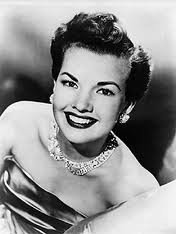Minnesota (/ˌmɪnəˈsoʊtə/ ⓘ MIN-ə-SOH-tə) is a state in the Upper Midwestern region of the United States. It is the 12th largest U.S. state in area and the 22nd most populous, with over 5.75 million residents. Minnesota is known as the "Land of 10,000 Lakes" for having more than 14,000 bodies of fresh water covering at least ten acres each; roughly a third of the state is forested; much of the remainder is prairie and farmland. More than 60% of Minnesotans (about 3.7 million) live in the Minneapolis–Saint Paul metropolitan area, known as the "Twin Cities", the state's main political, economic, and cultural hub and the 16th-largest metropolitan area in the U.S. Other minor metropolitan and micropolitan statistical areas include Duluth, Mankato, Moorhead, Rochester, and St. Cloud.
Minnesota, which gets its name from the Dakota language, has been inhabited by various Indigenous peoples since the Woodland period of the 11th century BCE. Between roughly 200 and 500 CE, two areas of the indigenous Hopewell tradition emerged: the Laurel complex in the north, and Trempealeau Hopewell in the Mississippi River Valley in the south. The Upper Mississippian culture, consisting of the Oneota people and other Siouan speakers, emerged around 1000 CE and lasted through the arrival of Europeans in the 17th century. French explorers and missionaries were the earliest Europeans to enter the region, encountering the Dakota, Ojibwe, and various Anishinaabe tribes. Much of what is now Minnesota formed part of the vast French holding of Louisiana, which the United States purchased in 1803. After several territorial reorganizations, the Minnesota Territory was admitted to the Union as the 32nd state in 1858. Minnesota's official motto, L'Étoile du Nord ("The Star of the North") is the only state motto in French; this phrase was adopted shortly after statehood and reflects both the state's early French explorers and its position as the northernmost state in the contiguous U.S.
As part of the American frontier, Minnesota attracted settlers and homesteaders from across the country. Its growth was initially based on timber, agriculture, and railroad construction. Into the early 20th century, European immigrants arrived in significant numbers, particularly from Scandinavia, Germany, and Central Europe; many were linked to the failed revolutions of 1848, which partly influenced the state's development as a center of labor and social activism. Minnesota's rapid industrialization and urbanization precipitated major social, economic, and political changes in the late 19th and early 20th centuries; the state was at the forefront of labor rights, women's suffrage, and political reform. Consequently, Minnesota is unique among Midwestern states in being a relative stronghold of the Democratic Party, having voted for every Democratic presidential nominee since 1976, longer than any other U.S. state.
Since the late 20th century, Minnesota's economy has diversified away from traditional industries such as agriculture and resource extraction to services, finance, and health care; it is consequently one of the richest states in terms of GDP and per capita income. Minnesota is home to 11 federally recognized Native American reservations (seven Ojibwe, four Dakota), and its culture, demographics, and religious landscape reflect Scandinavian and German influence. In more recent decades, the state has become more multicultural, driven by both larger domestic migration and immigration from Latin America, Asia, the Horn of Africa, and the Middle East; the state has the nation's largest population of Somali Americans and second-largest Hmong community. Minnesota's standard of living and level of education are among the highest in the U.S., and it is ranked among the best states in metrics such as employment, median income, safety, and governance.
Etymology
The word Minnesota comes from the Dakota name for the Minnesota River, which got its name from one of two words in Dakota: "mní sóta", which means "clear blue water", or "Mníssota", which means "cloudy water". Early explorers interpreted the Dakota name for the Minnesota River in different ways, and four spellings of the state's name were considered before settling on "Minnesota" in 1849, when the Territory of Minnesota was formed. Dakota people demonstrated the name to early settlers by dropping milk into water and calling it mní sóta. Many places in the state have similar Dakota names, such as Minnehaha Falls ("curling water" or waterfall), Minneiska ("white water"), Minneota ("much water"), Minnetonka ("big water"), Minnetrista ("crooked water"), and Minneapolis, a hybrid word combining Dakota mní ("water") and -polis (Greek for "city").
^Capital city Saint Paul
Geography
Minnesota is the second northernmost U.S. state (after Alaska) and northernmost contiguous state, as the isolated Northwest Angle in Lake of the Woods County is the only part of the 48 contiguous states north of the 49th parallel. The state is part of the U.S. region known as the Upper Midwest and part of North America's Great Lakes region. It shares a Lake Superior water border with Michigan and a land and water border with Wisconsin to the east. Iowa is to the south, North Dakota and South Dakota are to the west, and the Canadian provinces of Ontario and Manitoba are to the north. With 86,943 square miles, or approximately 2.25% of the United States, Minnesota is the 12th-largest state.
^Minneapolis
if you want to read a whole lot more, go here: https://en.wikipedia.org/wiki/Minnesota
- SERVES
- 6
- PREP
- 10 Min
We've got as fantastic summer recipe that doesn't require an oven! Try our Chicken Waldorf Salad for a truly flavorful way to enjoy the summer sunshine. It's loaded with tender chicken, crisp apples, and crunchy pecans. What's not to love? Your summer needs this no-heating-required salad recipe.
- 3 cups cooked chicken breast chunks
- 3 apples, cored and cut into 1/2-inch chunks
- 3 celery stalks, chopped
- 1 cup seedless green grapes, cut in half
- 1/2 cup coarsely chopped pecans
- 3/4 cup mayonnaise
- 2 teaspoons lemon juice
- 3/4 teaspoon salt
- In a large bowl, combine all ingredients; toss until well coated.
- Serve, or cover and chill until ready to serve.
2010 – Twenty-nine coal miners are killed in an explosion at the Upper Big Branch Mine in West Virginia.

1922 – Gale Storm, American singer and actress (d. 2009)
1933 – Frank Gorshin, American actor (d. 2005)
1937 – Colin Powell, American Army General, 12th Chairman of the Joint Chiefs of Staff; and 65th United States Secretary of State
1962 – Lana Clarkson, American actress (d. 2003)
Gold Star Spouses Day on April 5th honors the surviving loved ones of military service members who died while serving their country.
The day offers remembrance for the spouses and their families and a time of recognition of their sacrifices. Many communities and organizations hold events showing support for Gold Star families on this day. Through ceremonies, teas, memorial races, and luncheons, they honor and remember fallen warriors.
The loss of our service members extends beyond the battlefield and their service to their country. They leave behind grieving wives and husbands who become members of an exclusive community no one asks to join. Our support, understanding, and respect are the least we can provide in return as a nation.
HOW TO OBSERVE
- Attend a local event or volunteer with a veterans group.
- If you know a Gold Star family, stay connected.
- Attend memorials near you in honor of fallen warriors.
- Support Gold Star families by including them in memorial decisions.
- Find out more about Gold Star spouses by visiting goldstarwives.org.
GOLD STAR SPOUSES DAY HISTORY
World War I and Army Captain Robert L. Queissner paved the way for Gold Star families. National Gold Star Mother’s Day was designated on June 23, 1936, by a joint congressional resolution to occur on the Last Sunday in September. In 2011, President Barack Obama amended the day to “Gold Star Mother’s and Family’s Day.”
In 2010, the first Gold Star Wives Day was observed in December. Then in 2012, the U.S. Senate designated Gold Star Wives Day to be recognized each year on April 5th. The Senate later changed to be more inclusive of all spouses, and the name of the day is often used interchangeably.
The nonprofit organization Gold Star Wives, Inc. welcomes all spouses.

















